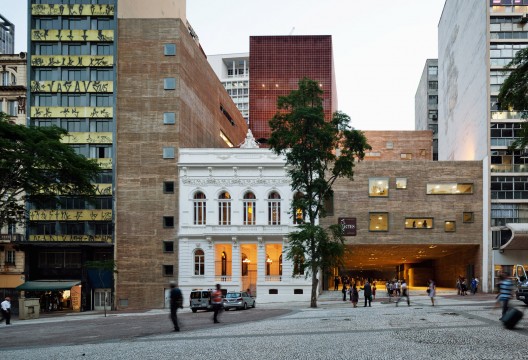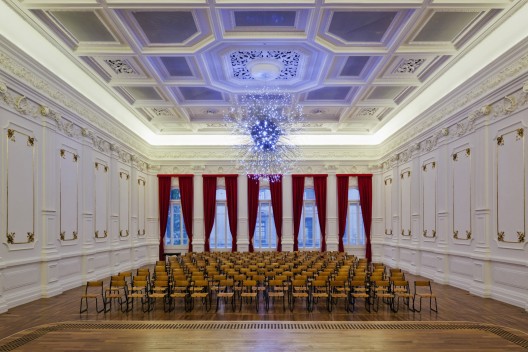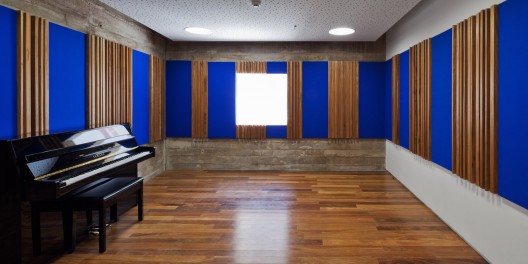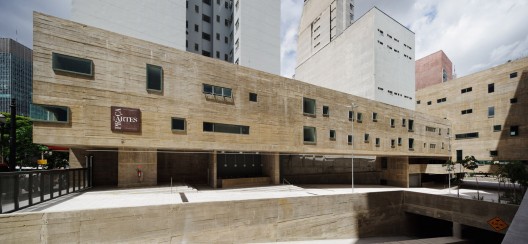I enjoy reading about public projects that are sewn in to the fabric of the city. This project by Brasil Arquitetura for a city centre arts and dance space in the heart of San Paulo, Brazil is just that. The Praça das Artes is a projects that has, as still is, adapting to adverse conditions.
Inhabiting the leftovers between existing constructions, minimal spaces, small wedges of long plots as well as socially and physically derelict buildings. The parameters for developing this project was dictated by a multitude of difficulties but it's character defined by the solutions with in the scheme.

Spaces like this are present in so many cities. It is sad that their development is hindered, not only by the characteristics of the physical buildings, but by the space of tension and conflicts of interest that evolving social factors bring to play, eventually characterising the areas with under use, misuse or even abandonment. They archetypal pattern of urban decay.
The former Dramatic and Musical Conservatory of São Paulo, was once located in the centre of the city. This project grew from the location of a rare concert hall that had been out of use for decades, allowing important historical and architectural life to be bought back to the heart of the city. The project resurrected the Conservatory and continued to make provision for the additional requirements of the companies to be located with in the building.

First to sign up for space with in this complex where the Municipal Symphonic and the Experimental Repertory Orchestras, the Lyrical and the São Paulo Choirs, the City Ballet Company and the Municipal String Quartet. Further down the line there will be the Municipal Music and Dance Schools, the Theatre Museum, an Arts Documentation Centre. Finally, the other usual suspects restaurants, cafes and other social areas and thankfully no shops (I've lived in Hong Kong too long).
In a historical city like San Paulo has been shaped over the centuries, not just physically but in the minds and hearts of the citizens of the city. On the one hand this project has to account for the demands of a programme of various new functions, related to the arts of music and dance. On the other, it has to clearly and transformitively respond to an existing urban geography, intense existing local life and a wider present neighbourhood that reflects the contemporary values of public life with in this history part of the city.

The architects intent was to, 'design a project is to capture and to invent a place at the same time and in the same strategy.' In this instance the architects have satisfied a long-term shortcoming of the spatial necessities of the theatre but on a wider spectrum have realised wider cultural program. It is heartening to hope that a cultural facility like this can perform a strategic and leading role in bringing services and businesses back to the city centre through its ongoing varied programming characterised simply by on going engaged public use.

No comments:
Post a Comment